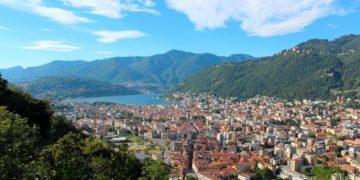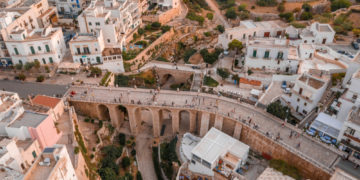Basilicata has been since ancient times a land of encounter between different cutures and its fluvial valleys have been important routes of communication between the Ionian coast and the Tyrrehenian Sea.
Sinece the arcahic age the distribution of particular objects first of the metallic aetefacts, indicates the activation of cicuits of axchenge between Etruria, infigenous and Greek world.
The evidence of these exhcanges is documented in the necropolis with prelavente funerary objects, characterized by luxury objects (Keimelia).
In Basilicata the circulation of bronze vases and tools from Etruscan and Tyrrhenian area lasted until the 5th century BC, but the intrinsic value of the objects guarantee theit prolonged use of hatding.
This panorama includes the discovery of the necrolpolis of Corpeto Perticara (PZ) and the tombs included in this exibition dating from the mid and trhird quarter of thr 4th century BC.
Preventive archology in the Sauro Valley. The “Tempa Rossa” project

The Sauro valley is located in southern Basilicata, where, dince the iron Age – in particular along the rivers Agri and Sinni – a large number of indigenous villages are developed (Gurardia Perticare, Aliano, Chiaromonte, etc,).
The settlement on the Ionian coast of the greek colonies is the source of intense contacts and exchanges, always at the center of itiniraries that, following the river valleys and transhumance routes, favored contacs between the Internal Appennines and the coastal regions of the Ionian, Adriatic end Tyrrrhenian seas.
The mound of resorts Montagnola (Corleto Perticara) Lucan aristocracies in the Sauro valleyThe upper part of the Sauro valleym thanks the recent finds during the works of the Tempa Rossa Project of Rotal E&P S,p.A. under constuction since 2012, have shown to been densely populated since ancient times.
The numerous and different settlements are referenced from a chronological period that the range from the Iron Age (8th century Bc) arriving to the medieval Age (15th century AC) and Post Mediaval Age (19 thCenruty AC). with a prevanlence in evidence that is attributable to the 4th century BC.
The mound of resorts Montagnola (Corleto Perticara) Lucan aristocracies in the Sauro valley

The neThe mound of resorts Montagnola (Corleto Perticara) Lucan aristocracies in the Sauro valleycropollis discovered in the Montagnola area (4th century BC) is comprised of thirteen tombs of which three of a monumetal inportance being typical of a room with a corridor (dromos).
Inside the tombs. besides the depositions, were found the ramins of the coffins and the rich equipments, which were commposed of objects in ceramic and metal that were attributed to the symposium and the banquet, The necropolis belongs to a Lucan elite established in the territory.
The exhibits include the Tombs 2 and 3, which are distinguished from the others by the quality of the objects: a long dromos of access led to the burial chamber, partly excavated in the natural rock, in which remains of the wooden arragement were kept, welcom both the skeleton and the objects ora part of it.







